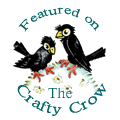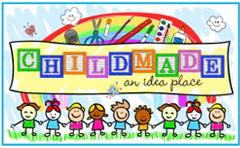We started by filling a jar about a quarter full of clear water.

We added two drops each of blue, red, and yellow food coloring.



Then, we folded up a coffee filter, and stuck the bottom of it into the colored water. If you wanted to get really properly scientific with this one, you would suspend the paper from the jar lid, so that it was not touching the sides, or the bottom of the jar. But, for our purposes, this was good enough.


The water, and food coloring, were drawn up the coffee filter by capillary action. Capillary action is what is used by plants to draw water and nutrients from their roots to their leaves. Because of the different absorption rate of the different colors (something that happens on a molecular level), the colors will separate out as they rise. Blue goes farther than yellow, and yellow farther than red.

This can be done with plants as well.
We started by picking a few leaves, and cutting up some fruits and vegetables (the carrot did not end up working for us, but I understand fresh, or frozen spinach works great).

We placed them in jars filled part way with rubbing alcohol.
 Then we put the jars into a pan of warm water, and kept replacing the water until we saw the color from the plants in the alcohol (we left our jars to sit overnight).
Then we put the jars into a pan of warm water, and kept replacing the water until we saw the color from the plants in the alcohol (we left our jars to sit overnight).

We folded up some more coffee filters, and placed them into the jars, and watched as the colors from the plants rose up the filters. If you want to know why the green leaves produce lines of green, brown and yellow, but not blue and yellow, check out www.chem.purdue.edu/teacher/table_of_contents/UVVUS/UVVIS.Plant%20Pigments_CH.pdf.

Finally, we poured all our plant solutions together (except for the carrots), and drew the colors out again - which was pretty cool. The colors don't show very well in the picture, but we got really clear bands of color for each different plant.


You can find out more about the science and uses of chromatography at www.sciencebuddies.org/mentoring/project_ideas/Chem_p008.shtml Or, you can just add a few pipe cleaners to make butterflies, and move on from science to art.

It's great to be a homeschooler!




No comments:
Post a Comment